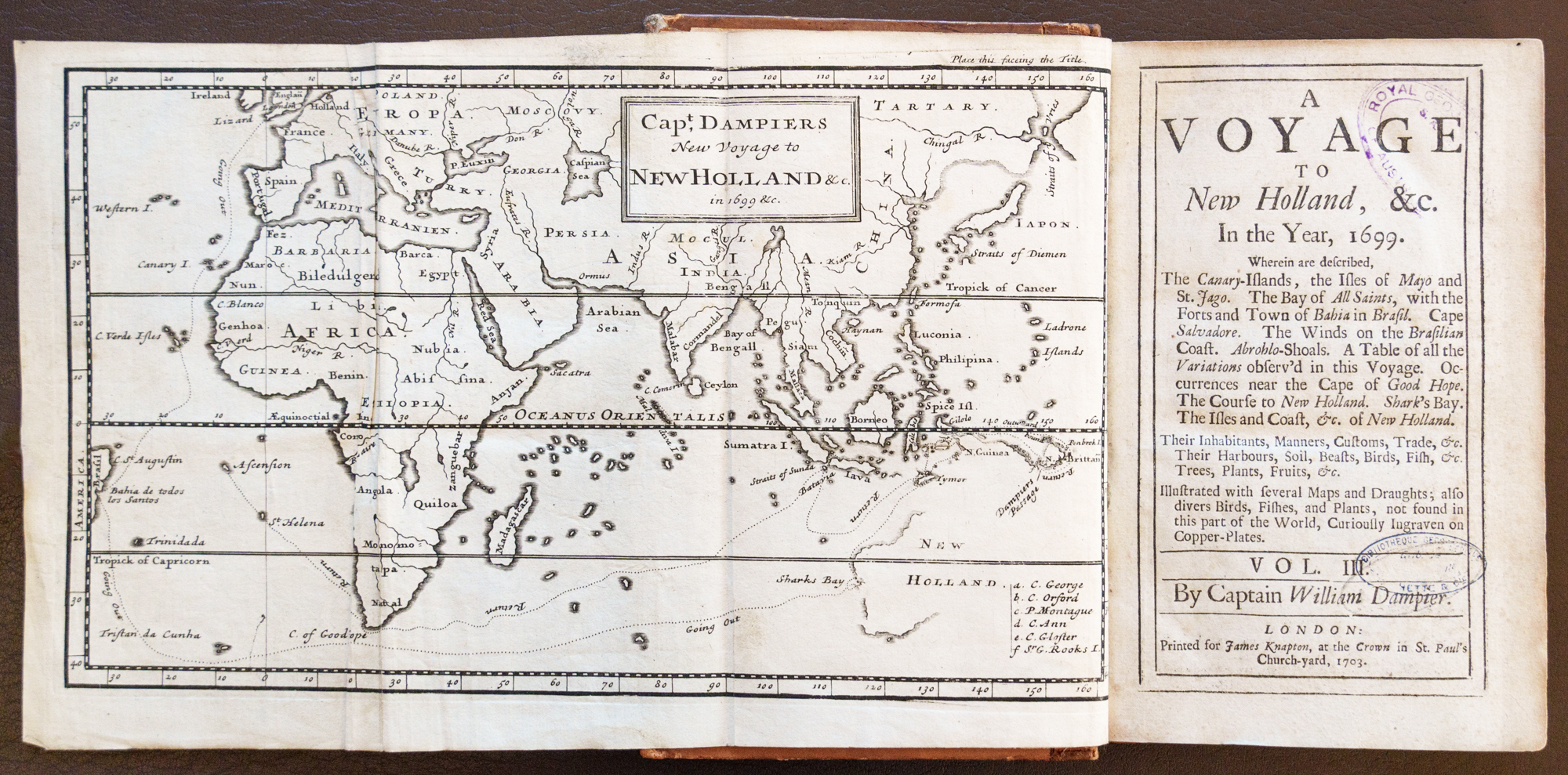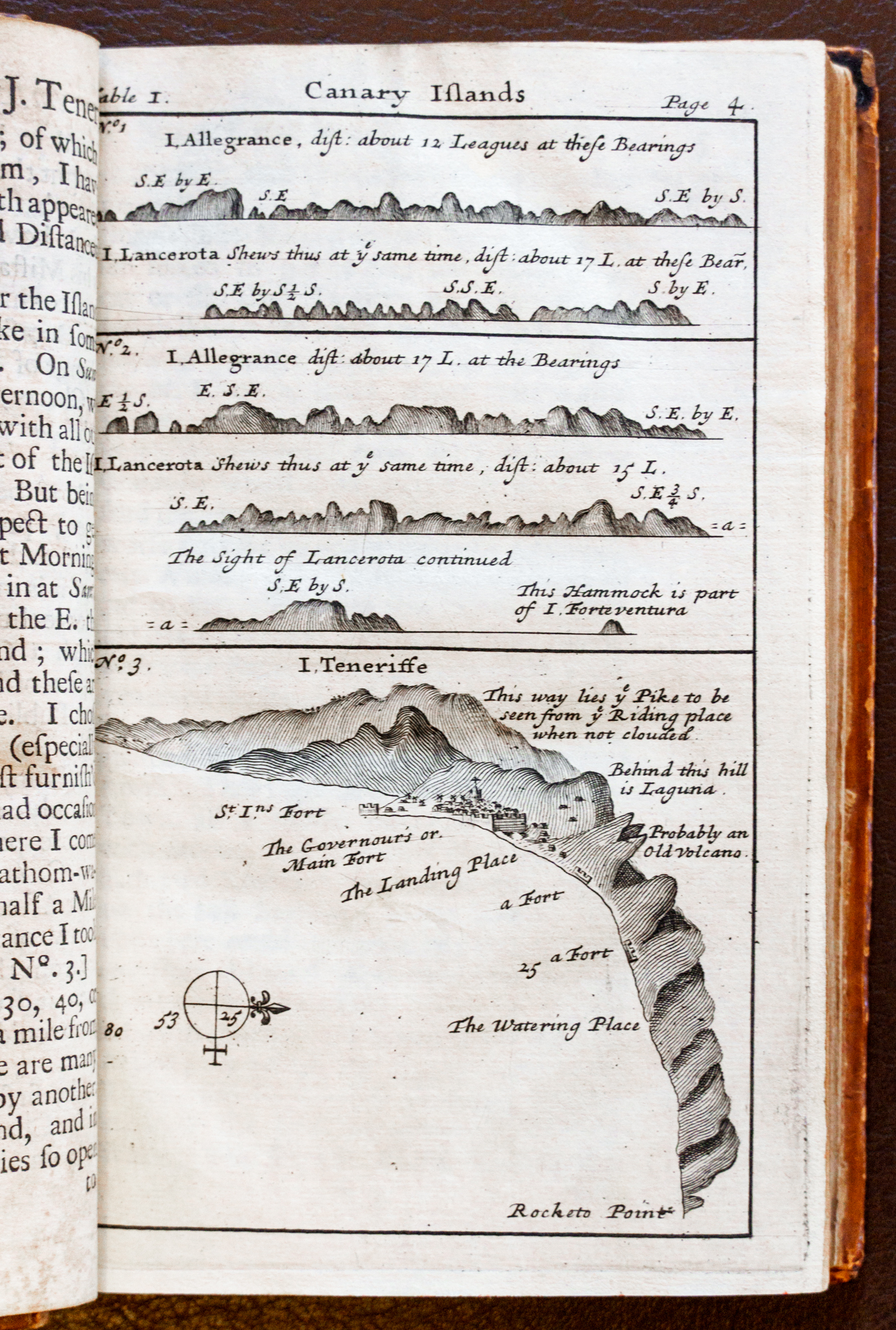
This is a record of Dampier's second voyage to Australia as master on board the HMS Roebuck and was published in London in 1703. It is of historical significance as an early work (pre 1800) of voyage, exploration and description of Australia. It also contains the first drawings of a number of Australian plants including Sturt’s desert pea and has a Gill bookplate.


William Dampier (1652-1715) was a buccaneer, seaman, naturalist and trader who sailed around the world three times. This is a very early description of a voyage, exploration and a section of the coast of Australia. This book, A Voyage to New Holland, is Dampier's account of his second voyage to Australia in HMS Roebuck in 1699 and was published in 1703. The work gave him greater acclaim than the voyage itself, which had failed to achieve much in the way of new discoveries.
Dampier's direct contribution to the "exploration" of Australia is slight but his books generated much interest and in the remainder of the 18th century there followed the voyages of Cook and Flinders which led to the British settlement of the east coast of the country and beyond.
rgsp 910.41D 166 1703 (From the Gill Collection)
During his first voyage to the South Sea in 1683 in HMS Cygnet Dampier visited the Philippines and also spend three months of 1688 exploring the coast of Western Australia in the vicinity of King Sound. He thus became one of the first Englishmen to set foot on the mainland of Terra Australis.
Returning to England in 1691 he wrote accounts of this voyage which were published in 1697 and 1699 and established him as an authority on the South Seas. As a result, the Admiralty consulted him on the best method of exploring these waters and subsequently gave him command of a second expedition sailing in August 1699 on HMS Roebuck. Once again he visited the coast of western Australia this time anchoring at Shark Bay. Being unable to find water he sailed north to Timor and the coast of New Guinea and in the process discovered and named New Britain - the only new discovery of the voyage.
Dampier had limited capability as a ship's captain and the Roebuck foundered on the way home. He was court marshalled in 1702 and barred from in future commanding His Majesty's ships.
Nevertheless, he made another voyage round the world between 1708 and 1711, not as a commander but as pilot to the efficient and successful Captain Woodes Rogers.
Dampier's works aroused great public interest, and indirectly contributed to the British discovery and early settlement of eastern Australia.
© The Royal Geographical Society of South Australia